Difference between revisions of "Dornier Do-31"
From D-day: wiki
(Created page with "{{Unitinfo | image=Dornier Do-31 | type=Transport | owner=Germany | year= | length=20.5 m | width=18 m | height=8.5 m |...") |
|||
| Line 18: | Line 18: | ||
|title=History | |title=History | ||
|content= | |content= | ||
| + | |||
| + | |||
| + | The Dornier Do-31 was a VTOL transport aircraft designed to be used along with the EWR VJ 101 VTOL fighter plane as part of West Germany's mobile defense strategy. Development of the Do-31 started in 1959 with a test rig being completed in 1962 which was used for several years to work out the problems with this large and ambitious design. Three different prototypes were then completed during 1967. The first prototype (Do-31E1) was only fitted with Bristol Pegasus engines for testing the standard horizontal operations and flew for the first time on February 10th 1967. The second prototype (Do-31E2) was used for static ground tests and never flew. The third and final prototype (Do-31E3) was fitted with both Bristol Pegasus engines and the Rolls-Royce RB162 lift engines and was capable of full VTOL operations, its first flight was during July 1967 and the first vertical take-off was achieved on November 22nd 1967. During the 1969 Paris air show the Do-31E3 gave a demonstration, during which it set world records for speed, distance, altitude and speed and duration over a course. The Do-31 remains the only jet powered VTOL transport aircraft ever built and as such these records have yet to be challenged. Unfortunately for this unique aircraft changes in strategy and the high cost of the project lead to its cancellation in 1970. Dornier also put forward a proposal for a larger civilian passenger version called the Do-231 but couldn't find any airlines interested in purchasing it so it failed to leave the drawing board. Two of the prototypes still exist today, Do-31E1 can be found displayed at the Dornier Museum in Friederichshafen and the Do-31E3 prototype is located within the Flugwerft Schleissheim aviation museum in Oberschleißheim. The second prototype Do-31E2 was scrapped soon after the project was cancelled. | ||
| Line 40: | Line 43: | ||
|content= | |content= | ||
image:do31.jpg{{!}} | image:do31.jpg{{!}} | ||
| + | image:do31_plan.jpg{{!}} | ||
| + | image:do31_01.jpg{{!}} | ||
| + | image:do31_02.jpg{{!}} | ||
| + | image:do31_03.jpg{{!}} | ||
| + | image:do31_04.jpg{{!}} | ||
}} | }} | ||
Latest revision as of 14:45, 20 March 2017
| ||||||||||||||||||||||||
History
The Dornier Do-31 was a VTOL transport aircraft designed to be used along with the EWR VJ 101 VTOL fighter plane as part of West Germany's mobile defense strategy. Development of the Do-31 started in 1959 with a test rig being completed in 1962 which was used for several years to work out the problems with this large and ambitious design. Three different prototypes were then completed during 1967. The first prototype (Do-31E1) was only fitted with Bristol Pegasus engines for testing the standard horizontal operations and flew for the first time on February 10th 1967. The second prototype (Do-31E2) was used for static ground tests and never flew. The third and final prototype (Do-31E3) was fitted with both Bristol Pegasus engines and the Rolls-Royce RB162 lift engines and was capable of full VTOL operations, its first flight was during July 1967 and the first vertical take-off was achieved on November 22nd 1967. During the 1969 Paris air show the Do-31E3 gave a demonstration, during which it set world records for speed, distance, altitude and speed and duration over a course. The Do-31 remains the only jet powered VTOL transport aircraft ever built and as such these records have yet to be challenged. Unfortunately for this unique aircraft changes in strategy and the high cost of the project lead to its cancellation in 1970. Dornier also put forward a proposal for a larger civilian passenger version called the Do-231 but couldn't find any airlines interested in purchasing it so it failed to leave the drawing board. Two of the prototypes still exist today, Do-31E1 can be found displayed at the Dornier Museum in Friederichshafen and the Do-31E3 prototype is located within the Flugwerft Schleissheim aviation museum in Oberschleißheim. The second prototype Do-31E2 was scrapped soon after the project was cancelled.
References
. . . .
Time Frames
| 1930 - 1940: Pre-War |
1940 - 1942: Early-War |
1942 - 1944: Mid-War |
1944 - 1945: Late-War |
1945 - 1960: Post-War |
1930 - 1960: Total-War |
|
| Buildable | Yes | Yes | ||||
| Bonus Crate | Yes | Yes |
. . . .
Comments
. . . .
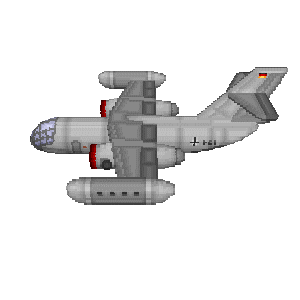
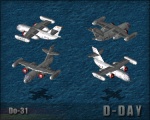
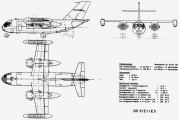
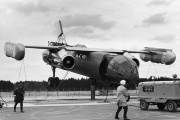
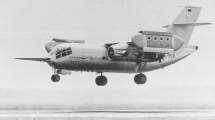
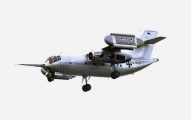

Enable comment auto-refresher